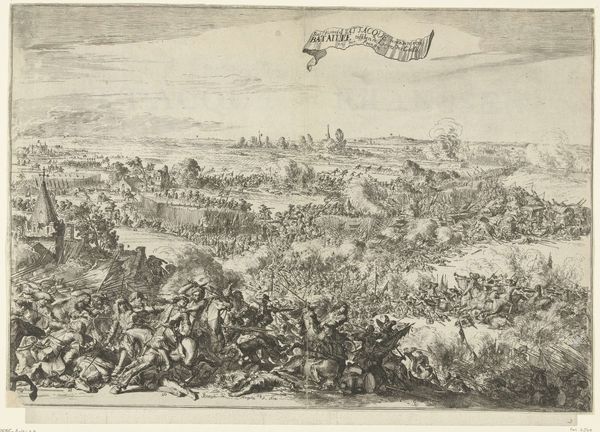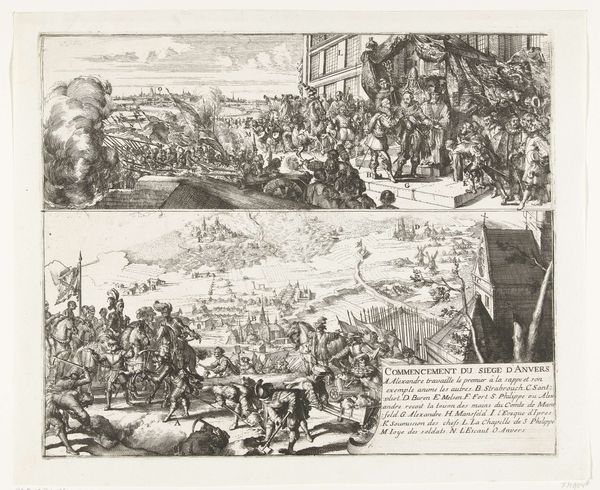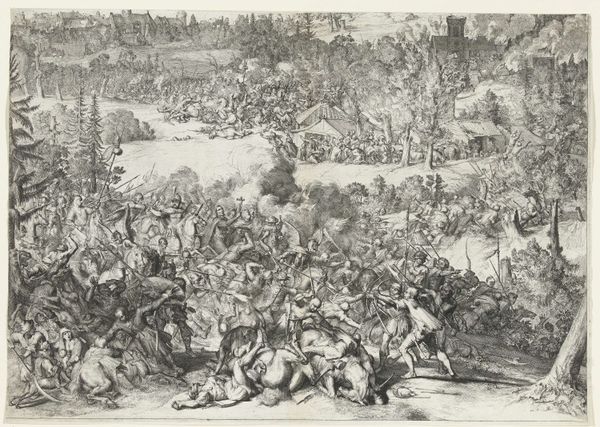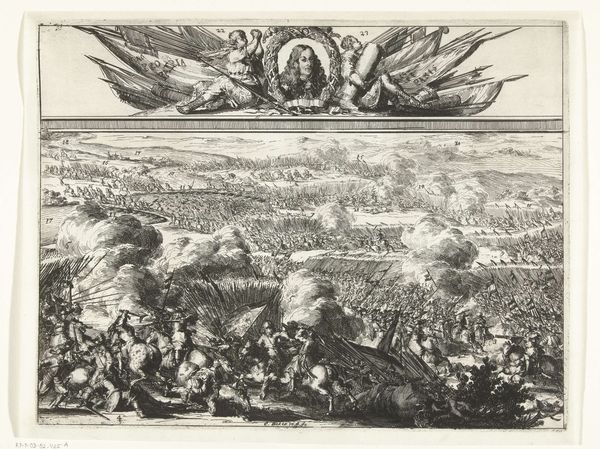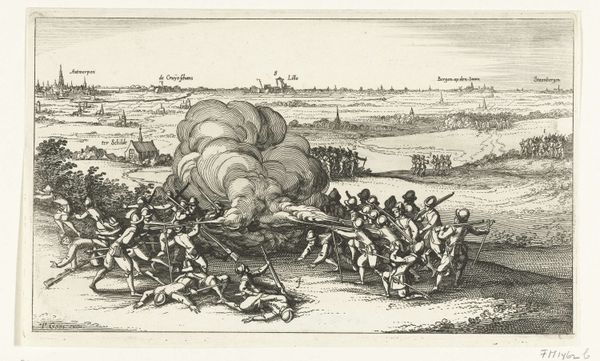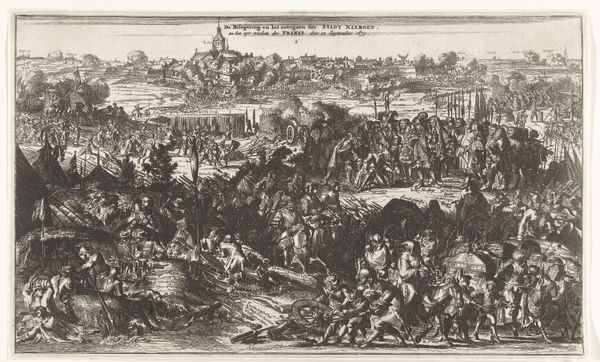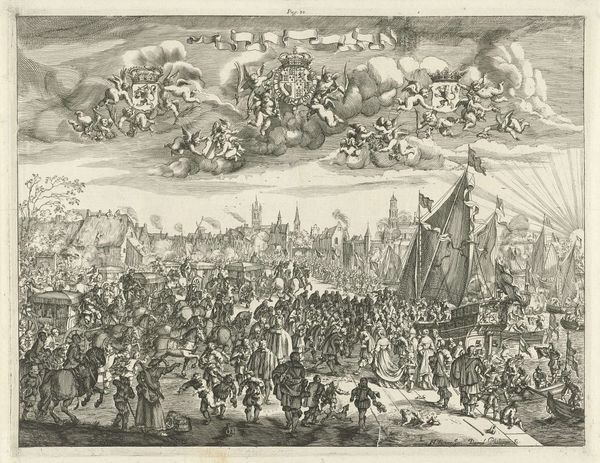
drawing, ink, engraving
#
drawing
#
ink drawing
#
baroque
#
pen drawing
#
landscape
#
figuration
#
ink
#
line
#
history-painting
#
engraving
Dimensions: height 165 mm, width 265 mm
Copyright: Rijks Museum: Open Domain
Curator: Here we have an engraving dating from 1690-1691 titled "Slag aan de Boyne, 1690," held here at the Rijksmuseum. Editor: My initial reaction is how this battle scene, rendered entirely in ink, possesses a captivatingly stark yet detailed landscape. It really does invite closer inspection. Curator: The anonymous artist masterfully utilizes the linear qualities of the engraving medium. Note how the intricate lines define form and create texture across the battlefield. Editor: It’s compelling to observe how the artist has documented this clash in materials easily accessible and broadly distributable. Think about it: Ink was widely available, and prints allowed the masses to have access to documentation of monumental moments. Curator: Quite right. The artist manipulates line weight to create depth, and the composition guides your eye across the chaotic scene, starting with the foreground figures on horseback. There is also masterful deployment of dark to light for emotional resonance, reflecting intensity, tension, and drama inherent within it. Editor: Indeed. By mass-producing these images, it's likely the engraver generated interest in and support for particular political and religious movements amongst contemporary society. It raises critical questions regarding accessibility to political information through artistic production and circulation, thereby broadening social knowledge. Curator: What’s fascinating is the way the anonymous engraver orchestrates such a sense of dynamism through these relatively static lines. Editor: To me, the availability of art itself became a weapon. These prints helped distribute a dominant ideology in the guise of a documentary record. Curator: Reflecting upon our visual and contextual perspectives, the formal approach grants access to visual techniques, whereas yours focuses on the social life of objects. It broadens our understanding of "Slag aan de Boyne, 1690" by thinking of the piece beyond pure aesthetic assessment, adding complexity and historical meaning. Editor: Yes, thinking about the cultural production around even historical subject matter moves us beyond conventional perspectives. A single image contains volumes if interrogated!
Comments
No comments
Be the first to comment and join the conversation on the ultimate creative platform.

